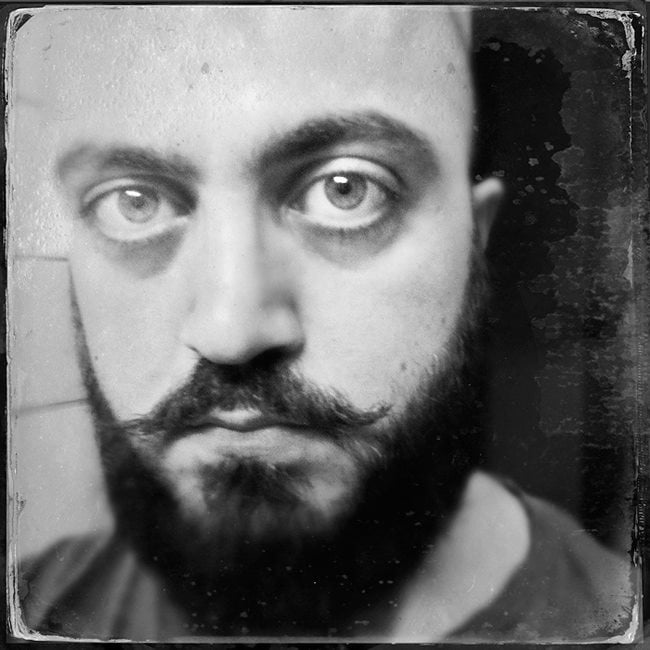When we work in a war zone and we know that the audience is hypersensitive, it’s very hard to go after promptness. All of PAN Photo’s photographers have been faced with the “photograph or not to photograph” dilemma.
For example, our photographer Areg Balayan, who lives in Karabakh, was the first to photograph the injured and killed children on April 2.
He was in the hospital when arose was the hardest dilemma any photographer, in general, is faced with: the choice between a photograph and a life. Areg called and said he can’t approach the wounded and dead teenage brothers’ parents (whom he knew) and say I’m going to photograph your son. But, on the other hand, he understood that there is a great need for his photos today: the children were caught under fire, and no one knew about it. Those photos were the first pieces of evidence that proved the resumption of hostilities.
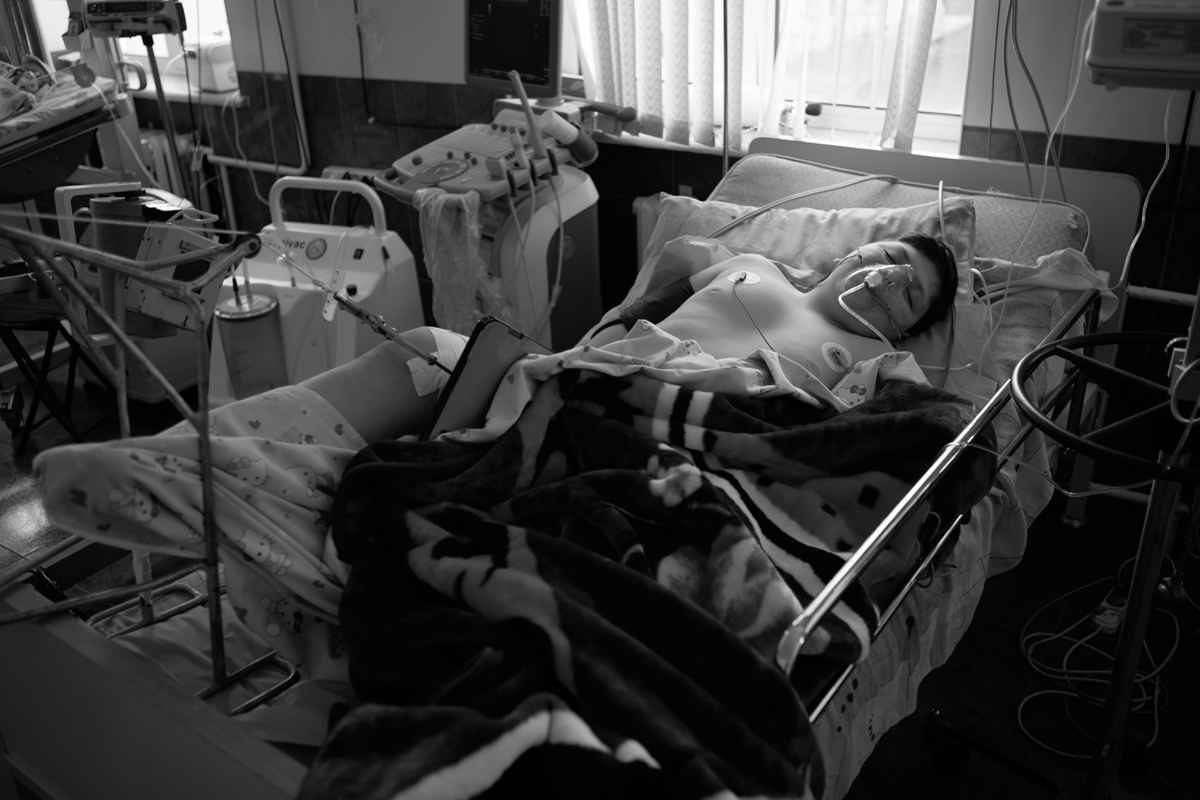
Of course, visual evidence is very important. I think, as well, that a photo in some cases is more powerful than a video, as it’s disseminated more quickly and more quickly remembered. The photo, it seems, takes what is most essential out of the video and places it before the audience.
When we went to the Yeghnikner military unit, one of the boys asked us to record his congratulations to his mother, since it was April 7 [Motherhood and Beauty Day]. I filmed [him], the video recording was disseminated, and I realized that instead of filming for a few minutes, I could’ve simply shot one frame and that would’ve been even more impressive. The video, it seems, is unnecessary, which, all the same, will be remembered in frames.
Let me also say that it made no difference for PAN Photo which media outlets will take our photos (whether they’re going to steal or reach an agreement). During these difficult days, the photos had to be disseminated; the issue was only to use them correctly. That is, not to strip them from one context and take them to another context.
I’m now talking about not Azerbaijani, but purely our [Armenian] media industry, where misinformation is not few and far between. And during the days of the Karabakh-Azerbaijani conflict too, the documentary aspect of the photos wasn’t always maintained.
For this reason, I place great importance on the short inscriptions accompanying a photo, which specify who, where, and what contexts are photographed. Those captions are no less important information than the image.
Again returning to the photos of the children, I want to say that we provided detailed captions, based on doctors’ remarks, verifying the children’s names and birthdates.
When last year I was speaking with prominent Danish photographer Jan Grarup, who has seen and photographed almost every possible calamity and atrocity, I asked at what point would he turn off his device and would no longer photograph. He replied: “In only one case I won’t photograph: if I feel that I can help.” In other words, to rescue [someone] from death, to move, physically assist, and so on.
But added to that is another, more difficult dilemma: when to show what you photographed? Photographers working in hot spots take a lot of photos but publish only a very small percentage of them.
A photo sometimes is like cognac: its historical value increases with time. Many photos touch people’s hearts and have an instantaneous emotional effect. And then they are quickly lost, forgotten.
Today, no one wants to see a catastrophe, the horror of war, since they feel that inwardly they’re not ready for it.
It’s interesting that what was most widely shared in recent days weren’t photos of military actions and their consequences, but photos of the youth of the village of Talish. It turned out that after the army we immediately entered bombed Talish and photographed the young men in army uniforms who greeted us. Let’s put aside the quality of the photo, what was important was that it became the first image of victory and the pursuit of peace. And that image was in demand.

Then it was stripped of its context and shared without reference to the location or time. It turned out that they were simply soldiers; meanwhile, I’m sure that it was the village and our victory that was important.
A photo loses its role when its caption becomes derivative and unimportant.
In Martakert, we met an elderly man, who was standing right in the middle of an empty, dilapidated street. It was obvious that the photo is already ready (an old man with a dramatic appearance in a destroyed city), but when I spoke to him, it became clear that this 92-year-old man had been one of the leaders of the 1993 military operations and also that it was due to him that Martakert was liberated. And that information completed the photo, turning it into a photo story.
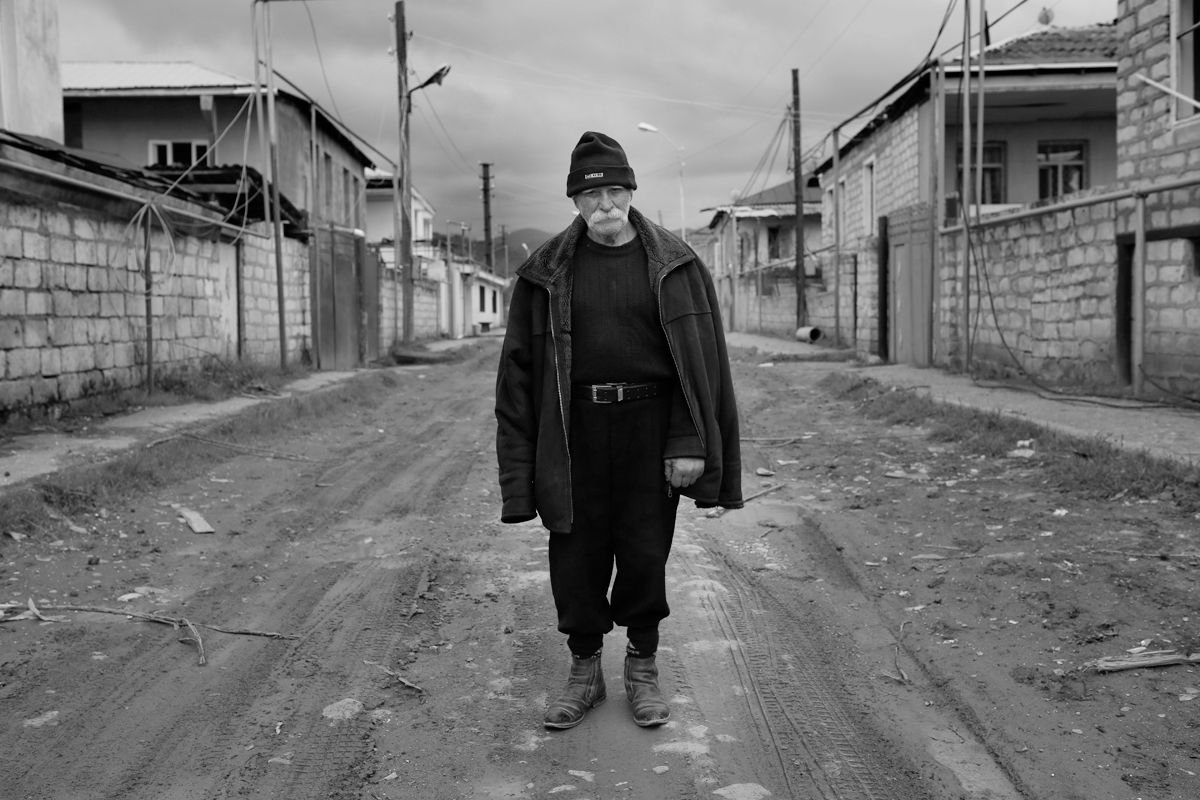
I myself don’t like to write long pieces, but I understand that a documentary photo today becomes a story and becomes appreciated only through text. Otherwise, there would be no difference when we photograph our soldiers (immediately after the fighting or 10 days before).
When you photograph them one minute after the ceasefire, the story acquires meaning. The photo also becomes part of history.
During the days of the war, all our photographers working in Nagorno-Karabakh knew there could be photos that aren’t subject to publication. Since the NKR Ministry of Defense was coordinating the work, we had agreed in advance what was going to be published, what not; whose name is going to be mentioned, whose not.
It’s possible for us to have accidentally photographed, say, certain corners or the area of the [military] posts and endangered our boys with that. We, as a rule, wouldn’t mention the place, referring to it in a generalized way; for example, “northwestern border.”
Of course sometimes you think if you get a little closer to the posts or get to a higher vantage point, the photo will turn out better, but then you realize that you’re not standing at the border and have no right to leave someone else in a dangerous situation.
No photograph can be more important than a person’s life.
Any photo depends on a number of elements; a viewer might not notice them, but photographers are obliged to notice and not allow for “open” areas to remain and questions to arise. The gaps are filled with captions.
During these days, PAN Photo’s photographs were printed in more than a thousand international newspapers and we’re satisfied since we know that we haven’t given a wrong photo. That is, a photo that might later harm Armenia or Nagorno-Karabakh. Apart from fact-checking and details, there are also slight nuances. For example, when I noticed that a soldier’s clothing was torn or dirty, I tried not to photograph that. Perhaps I’m saying something trifling, but I wouldn’t want this photo to become a topic to be raised in other countries.
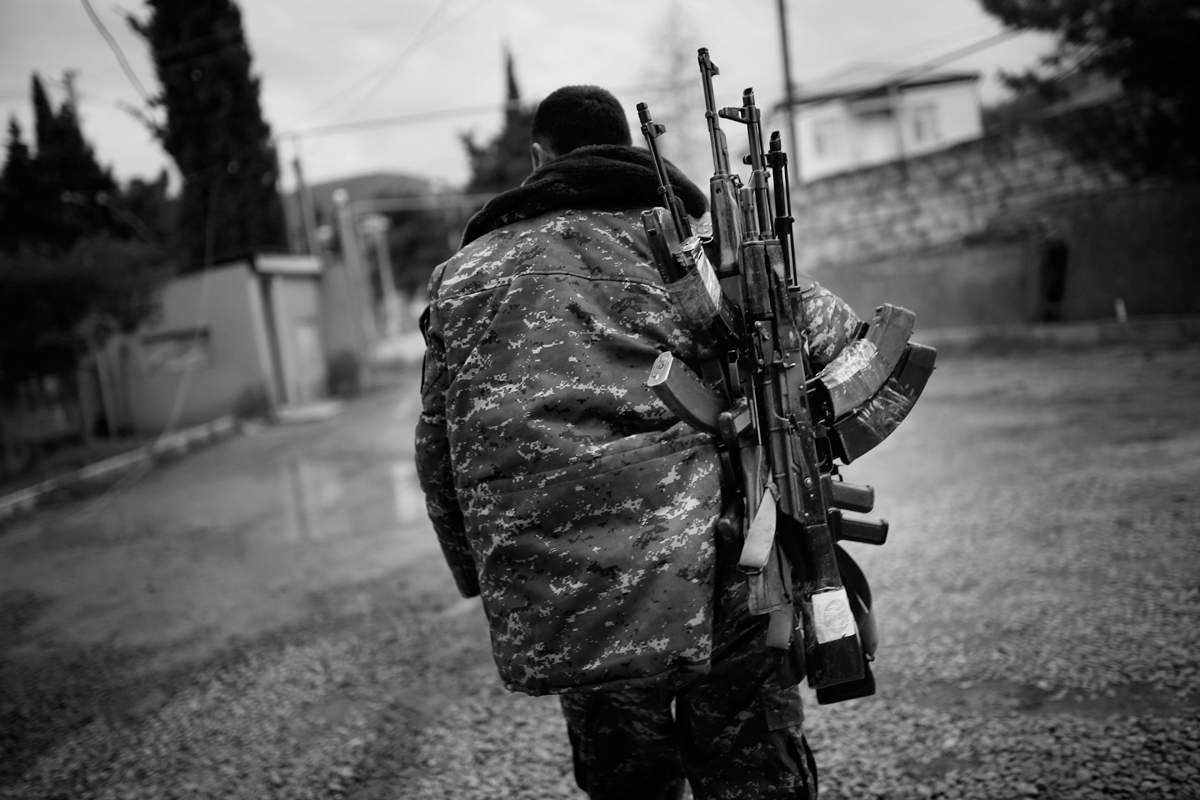
I see no problem with people going to the [military] posts and trenches and taking selfies, writing, “Dear soldiers, I would die for you” [more endearing and colloquial in Armenian]. The problem is that it seems to conceal the reality or at least sideline it.
Now there are many journalists in Nagorno-Karabakh. Some don’t go far from the main square in Stepanakert, while others go to the [military] posts and try to understand the situation.
I think our photojournalists now work better than many journalists. While working in Karabakh, I noticed that no matter how much they don’t like each other and compete with one another, our photojournalists are united. Everyone seemed to work as one unit. While the journalists strived to do a unique job; they wanted to show that their work was different from the others’.
When, for example, we went to film the traces of the Smerch [rocket launcher] and the mine fragments stuck in the asphalt, the photographers and camera operators first began to examine the area, to choose their angles. That is, the internal preparedness was felt.
Whereas the journalists immediately ran close to the mine and secured a place to do the reportage (it even seemed that the mine was going to explode again). That was an issue not of the internal culture, but rather of snatching a reportage from each other. There was the impression that this is a press conference and the mine can answer only one question, and all the journalists wanted to be the one who asked the sole question.
I don’t want to complain, but I think that there’s a demand now for journalists, and that’s why everyone wants to become a journalist. There’s no demand for photographers.
And it’s interesting that from this four-day war, a few experienced journalists’ pieces remained of value, while the others didn’t have a good idea of where they’ve come and what is requested of them.
Of course I can’t speak on behalf of everyone, but, for example, for our agency it was very dear that many people received news of their children through our photographs. They saw that in our photos they’re alive and well and in place (there are many areas where there really is no means of communication). This may be the case of a photo serving its highest purpose.
Good news today seems to have become an opportunity to mock or ridicule; everyone is waiting for bad news. And yes, often we don’t imagine in what format good news is constructed. Perhaps that’s why good news enters the unconscious sensory area, is pathetically presented, and resembles a balloon.
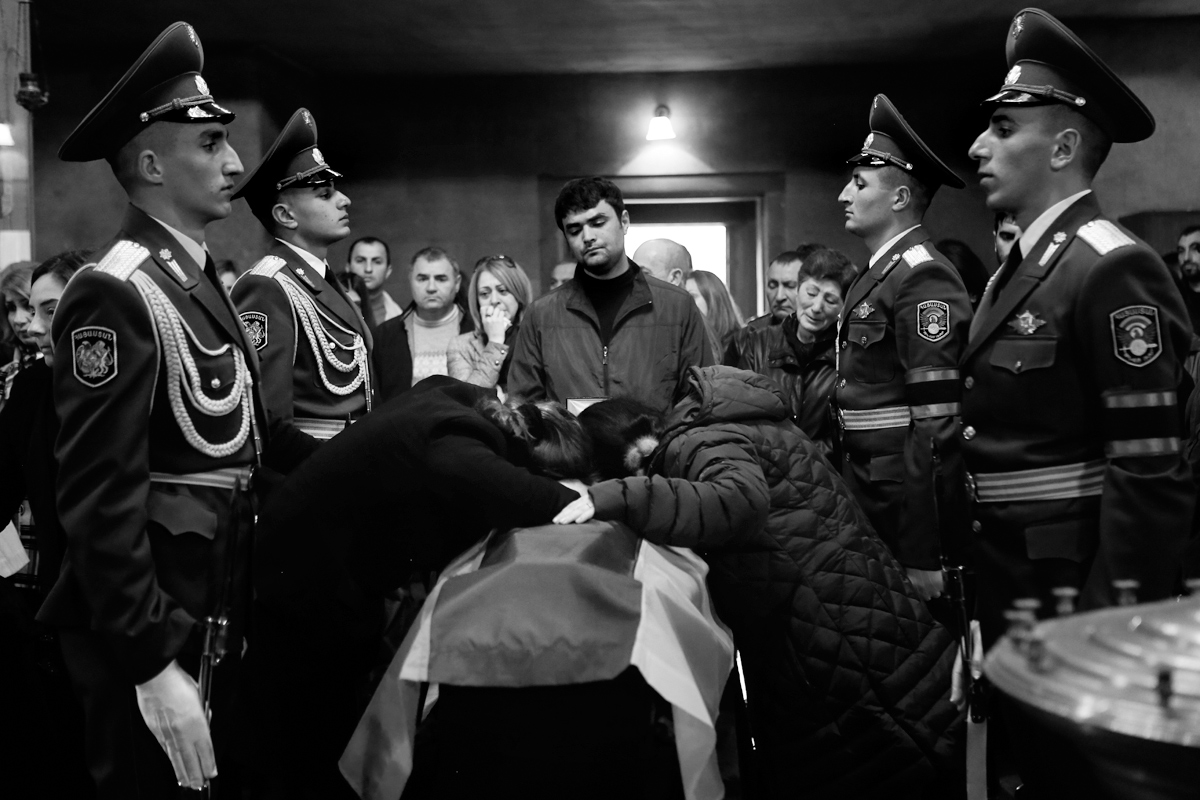
It’s hard to find the correct format that will be meaningful and become a counterbalance to horrible news. Bad news is disseminated more consciously and also perceived consciously. A piece of good news must be true, must have a foundation. And I repeat again: it shouldn’t be presented only through photo. Only the photo is not enough.
After all, we’re not robots who go and quickly snap photos. A photo is always a conversation, contact, an exchange of information. So much has accumulated inside me that now I’m trying to find ways to express it.
Vahan Stepanyan
Co-founder, PAN Photo agency
Photographer
